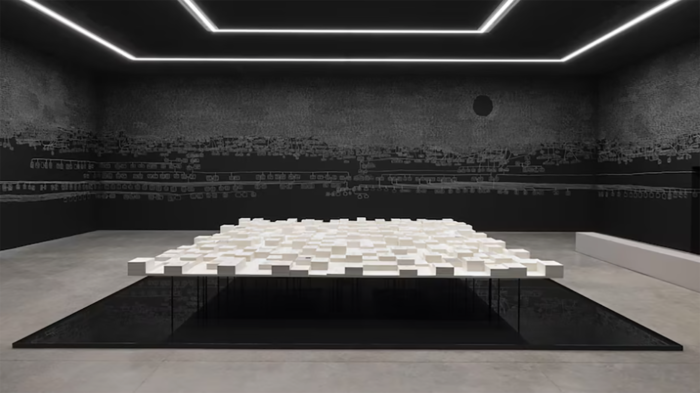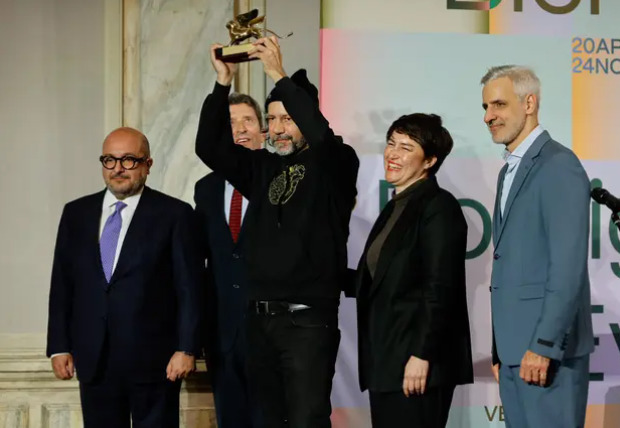
Archie Moore, a distinguished First Nations Artist from Australia, has carved his name into the annals of art history by clinching the prestigious Golden Lion prize for Best National Participation at the 60th International Art Exhibition of La Biennale di Venezia. His groundbreaking exhibit, “Kith and Kin,” is a testament to his artistic prowess and cultural heritage, marking him as the first Australian to be honored with this esteemed accolade.
In “Kith and Kin,” Moore masterfully unveils a profound genealogical narrative meticulously rendered in white chalk upon black walls. The artwork serves as a visual symphony, tracing Moore’s lineage through the Kamilaroi, Bigambul, and British ancestries, spanning an astonishing 65,000 years. It transcends mere historical documentation, offering a poignant exploration of First Nation Australian perceptions of lineage and connectivity juxtaposed against the backdrop of profound intergenerational trauma.
Within the solemn ambiance of Moore’s Pavilion, visitors are invited to contemplate the intricate tapestry of human history, both recorded and lost, inscribed upon the darkened walls and ceiling. Each stroke of chalk invites introspection, urging viewers to confront the inherent fragility of memory and the enduring legacy of collective mourning.

Reflecting on his creation, Moore emphasizes the holistic nature of Aboriginal kinship systems, wherein all living beings are intricately woven into a more extensive network of relatedness. He elucidates how the land assumes the roles of mentor and parent, fostering a profound sense of interconnectedness among all beings, past, present, and future. Moore’s work serves as a poignant reminder of humanity’s shared responsibility to nurture and protect the sanctity of life in all its forms.
Amidst the bustling panorama of artistic expression at the Biennale, special mention was bestowed upon the Kosovo Pavilion for its evocative installation, “The Echoing Silences of Metal and Skin,” by artist Doruntina Kastrati. Delving into the aftermath of the Kosovo War, Kastrati’s work resonates with profound themes of resilience and feminist activism, leaving an indelible imprint on the collective consciousness of visitors.
Elsewhere, Mataaho Collective from New Zealand captured the Golden Lion for their remarkable contribution to the exhibition “Foreigners Everywhere,” curated by Adriano Pedrosa. Their monumental woven installation, “Takapau (2022),” serves as a striking testament to indigenous creativity and resilience, enveloping the main entrance of the Arsenale with its arresting beauty.
Acknowledgment was also extended to venerable artists Samia Halaby and La Chola Poblete for their exemplary contributions to “Foreigners Everywhere.” Halaby’s poignant dedication to the youth of Gaza and Poblete’s sophisticated queer imagery underscores the diverse array of voices amplified by Pedrosa’s curatorial vision.
Furthermore, the Biennale celebrated the emergence of promising talents, with Nigerian-British artist Karimah Ashadu receiving the Silver Lion for her visionary work. Meanwhile, stalwarts Anna Maria Maiolino and Nil Yalter were honored with prestigious Golden Lion awards for lifetime achievement, reaffirming their indelible impact on the global art scene.
As the curtains draw to a close on another remarkable edition of the Venice Biennale, the legacy of Archie Moore and his fellow artists resonates as a testament to the transcendent power of art to illuminate, provoke, and inspire change on a global scale.

